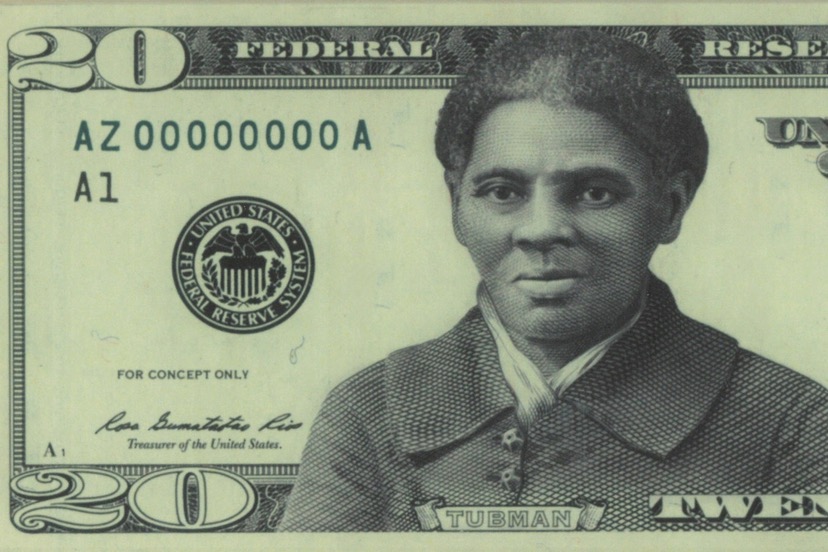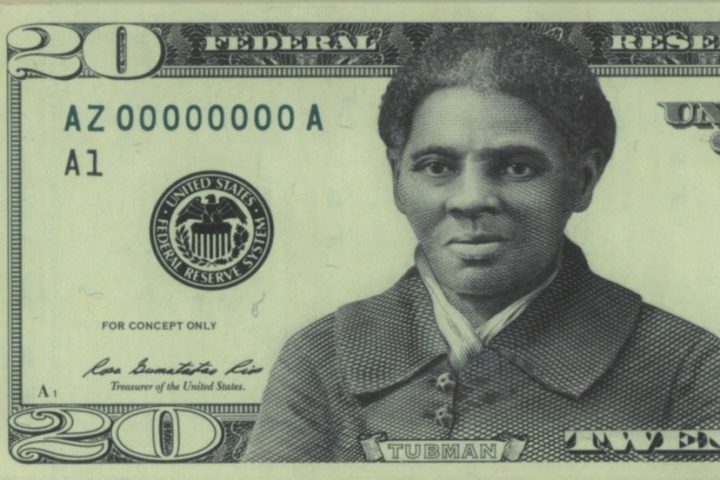“The Treasury Department is taking steps to resume efforts to put Harriet Tubman on the front of the new $20 notes,” Psaki said. “It’s important that our notes … reflect the history and diversity of our country, and Harriet Tubman’s image gracing the new $20 note would certainly reflect that. So we’re exploring ways to speed up that effort…”
— from a Washington Post article, ‘Biden administration revives effort to put Harriet Tubman on $20 bill’, on January 25, 2021.
The American $20 bill might be getting a new — but, to some, familiar — face. The Biden administration has reportedly resumed the process of replacing President Andrew Jackson’s face with former slave and abolitionist Harriet Tubman. As such, she would find a place in our wallets beside some famous males: George Washington (a slave owner), Thomas Jefferson (a slave owner), Abraham Lincoln (signer of the Emancipation Proclamation), Alexander Hamilton (possibly a slave owner, but later an abolitionist), Andrew Jackson (a slave owner), Ulysses Grant (a slave owner), and Benjamin Franklin (a slave owner, but later an abolitionist.)
Back in 2016, the Obama administration announced plans to put Harriet Tubman on the face of the $20 bill — a role filled, for some time now, by US President Andrew Jackson. Ms. Tubman was chosen from among several women in an informal nationwide poll. Here is a “concept only” image I found on The New York Times website.
Following the administration’s announcement, Rep. Joyce Beatty (D-Ohio), chair of the Congressional Black Caucus, announced that she would reintroduce legislation requiring a woman to appear on $20 bills issued after 2024. She had sponsored the ‘Women on the Twenty Act’ in previous Congresses. (A reference to the 19th Amendment, passed in 1920?)
“For several years, I worked directly with the Department of Treasury to plan the release of the new $20 design featuring Harriet Tubman to coincide with the 100th anniversary of the 19th Amendment,” Beatty said in a statement. “The American people want our currency to better reflect the diversity of our great country. I look forward to working with the Biden-Harris administration, including the first-ever female Secretary of Treasury, Janet Yellen, to put a woman on the twenty and make the ‘Tubman Twenty’ a reality.”
The proposal will place the hero of “Underground Railroad” fame on the face of the $20, while Andrew Jackson’s portrait will be moved to the back of the bill. (Perhaps our readers can appreciate the exquisite irony of such an arrangement.)
President Donald Trump and Treasury Secretary Steven Mnuchin had put the replacement plan on hold in 2019. President Trump reportedly admired President Jackson, and displayed a bust of him in the Oval office.
Jackson, a hero during the War of 1812 and other conflicts, was a slave owner — like certain other US presidents before and after him — and is widely considered, by historians, to be responsible for genocide practiced against American Indians. His supporters officially formed the Democratic Party in 1828, when he won his first term as president, in which role he fought to protect the practice of slave-owning.
“Andrew Jackson had a great history,” President Trump claimed in 2019, “and I think it’s very rough when you take somebody off the bill.” The President classified the prior decision to include Harriet Tubman on the bill as “pure political correctness” — and suggested she appear instead on the largely ceremonial $2 bill, replacing Thomas Jefferson. We don’t know much about President Trump’s feelings for Thomas Jefferson, other than his willingness to publicly quote Jefferson on the subject of the free press: “Nothing can be believed which is seen in a newspaper.” (The actual quote, from 1807, is “Nothing can now be believed which is seen in a newspaper.”)
Harriet Tubman was originally slated to appear on the $10 bill, replacing Alexander Hamilton, one of the two ‘non-presidents’ currently featured on American money. (Benjamin Franklin appears on the $100 bill.) But Secretary of the Treasury Hamilton reportedly hung on to his spot on the ten due to the popularity of the award-winning Broadway musical “Hamilton.” Yes, Americans love celebrities. Ms. Tubman was moved to the $20 instead. (Andrew Jackson has not yet been the subject of a hit Broadway musical, and is perhaps unlikely to be, any time soon.)
If President Biden’s effort is successful, Harriet Tubman will become the first Black person on the face of American paper currency, and the first woman in well over 100 years. Pocahontas was the first woman to appear on US paper money, depicted as part of a group illustration on the back of the $20 bill from 1865 to 1869. Martha Washington appeared on a $1 silver certificate for a few years, starting in 1886.
The $100 bill, meanwhile, will continue to feature Benjamin Franklin, who played a prominent role in the succession of the American colonies from Great Britain, but never served as US President, nor in any Cabinet position. In fact, the highest federal post Ben Franklin ever held was Postmaster General. He also served as Governor of Pennsylvania for one term.
Mr. Franklin owned slaves for nearly 50 years, and published writings supporting the idea that Blacks could not be educated. But he began to change his mind in 1758 when he visited a school for black children run by a philanthropic association affiliated to the Church of England. In 1759, he joined the association by donating money.
In 1763, Franklin wrote in an essay that “African shortcomings and ignorance” were not inherent, but resulted from a lack of education and from slavery. He freed his own slaves in 1781. Franklin became the President of the Philadelphia Society for the Relief of Free Negroes Unlawfully Held in Bondage, often referred as the Abolition Society, in 1787. The Abolition Society was the first in America and served as inspiration for the formation of abolitionist societies in other colonies. The group focused not only in abolishing slavery but also in education, moral instruction and employment.
On February 3, 1790, less than three months before his death, Franklin petitioned Congress to provide the means to bring an end to slavery. It would be another 73 years before that grim period of American history came to an end.
The historians tell us that escaped slave Harriet Tubman led at least 70 individuals to freedom between 1850 and 1860, at which time she joined the Union Army and served as a spy during the Civil War. She died of pneumonia in Auburn, New York, in 1913… after devoting much of her latter years to the women’s suffrage movement. American women won the right to vote seven years later.


